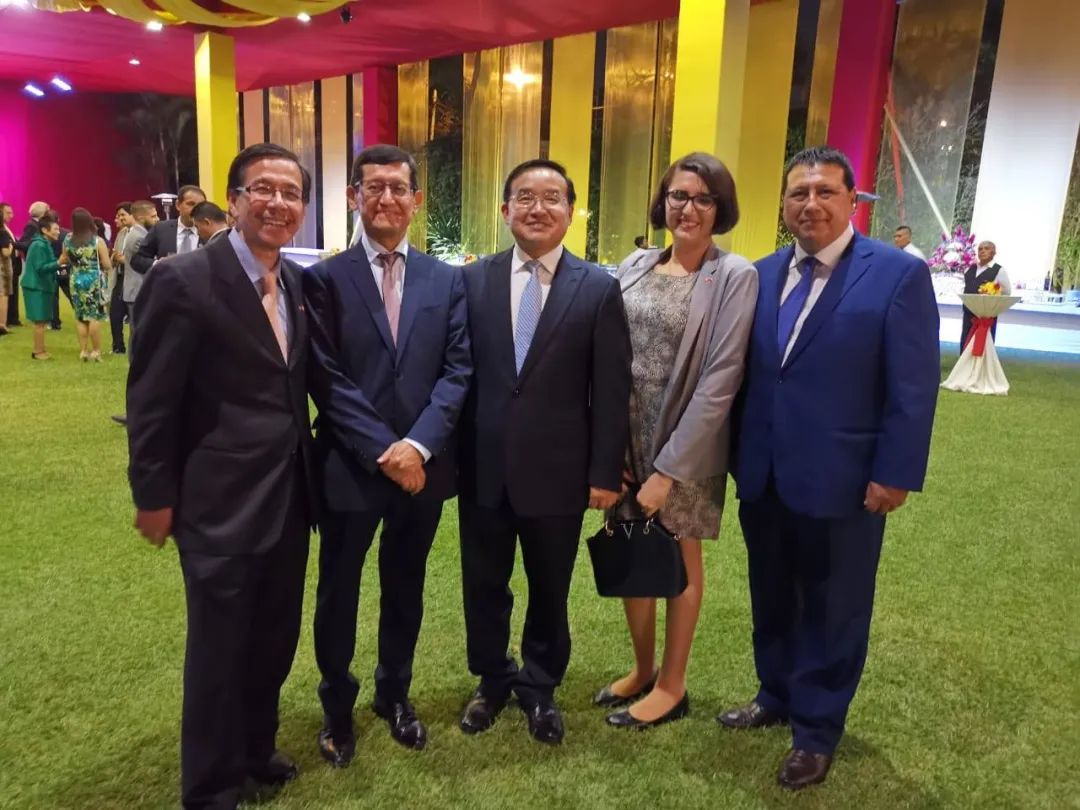
As China's economy faces many challenges, in his speech at the opening session of the 20th National Congress of the Communist Party of China President Xi Jinping launched an agenda that will guide the country for the next five years. In its quest to be a modern socialist state by 2035, the concept of a "New development pattern" is expected to create economic opportunities for the world during an era of low growth, high inflation, post-pandemic consequences and uncertainties due to increasing trends of deglobalization, the war in Europe and climate change.
面对当今中国经济的诸多挑战,中国国家主席习近平在中国共产党第二十次全国代表大会开幕会上的讲话中提出了未来五年的主要目标任务。在追求到2035年基本实现社会主义现代化的进程中,在这个低增长、高通胀、后疫情时代,伴随着由于去全球化趋势日益加剧、欧洲大陆的战争和气候变化而产生的不确定性, 中国的"新发展模式"概念将为世界创造经济机会。
One of the main challenges that faces the Chinese economy is the increasing pressure the United Sates is leveraging through technological competition. Most recently, the US government has ordered the halt of sales of semiconductors used to produce supercomputers and artificial intelligence and have forbidden any citizen of the US to work in Chinese companies involved in this business.
中国经济面临的主要挑战之一是美国正在越来越多地通过技术竞争施加压力。最近,美国政府下令停止对华销售用于生产超级计算机和人工智能的半导体,并禁止任何美国公民在涉及该业务的中国公司工作。
That is why the Chinese government is increasing its efforts to be technologically self-sufficient and independent of foreign technology. For this end, China will redouble its efforts to invest in R&D and implement strategies to develop a high-quality workforce. In this scenario the "Made in China 2025" policy was a good strategy because it seeks to reach 70 percent sufficiency in basic materials for 10 advanced industries including semiconductors, autonomous vehicles, AI, aerospace and digital development. China spends around 2.5 percent of its GDP in R&D and this must increase for these goals to be achieved.
这就是为什么中国政府正在加大努力在技术上实现自给自足,不依赖外国技术。为此,中国将加大研发投入,培养高素质劳动力。在这种情况下,“中国制造2025”行动纲领是一个很好的战略,因为它寻求为半导体、自动驾驶汽车、人工智能、航空航天和数字开发等十个先进行业提供70%的基本材料。中国在研发上的投入占国内生产总值的2.5%左右,要实现这些目标,这一比例必须提高。
China's development of indigenous technology in these industries will bring a needed alternative to developed countries which now must rely on the US. This will also create more competition, thus reducing the costs of these advanced products.
中国在这些行业发展自主技术,可以让依赖美国的发达国家找到必要的替代选择。由此产生的竞争还将降低这些高端产品的成本。
Another challenge China faces are the consequences of climate change via environmental contamination, land degradation, droughts and floods. Xi mentioned China needs to accelerate its transition to a green economy and consumption by developing low-carbon industries and using more clean energies. This represents an opportunity for Latin American countries because they can supply clean materials to build wind farms, solar panels, electric cars, batteries and other necessary infrastructure because they are big suppliers of minerals like copper, iron and lithium.
中国面临的另一个挑战是气候变化带来的环境污染、土地退化、干旱和洪水。习近平主席提到,中国需要通过发展低碳产业和使用更多清洁能源,加快向绿色和消费型经济转型。这对拉美国家来说是一个机遇,因为他们是铜、铁和锂等矿产的主要供应国,可以为建设风力发电场、太阳能电池板、电动汽车、电池和其他必要的基础设施提供清洁材料。
China must also work to create a larger middle class. This has to do with common prosperity, a key principle Xi has mentioned on several occasions.
中国还必须努力扩大中产阶级的数量。这与习近平主席多次提到的共同富裕原则有关。
Lastly, another opportunity for the world is China is willing to keep opening its economy. For example, China announced it wants to be part of the Comprehensive and Progressive Agreement for Trans-Pacific Partnership. This is a more advanced and wide trade agreement, and will not only open China's market more but will also make rules for investment and government purchases more transparent.
而中国愿意继续改革开放则是为世界经济提供了另一个机会。中国申请加入CPTPP就是一个例子。CPTPP是一个更先进、范围更广的贸易协定,不仅将进一步开放中国市场,还将使投资和政府采购的规则更加透明。
In the CPTPP there are also Latin American countries like Peru, Chile and Mexico. The first two have Free Trade Agreements with China but the CPTPP offers more market liberalization. China's willingness to enter this agreement is in contrast with countries like the US that are forming rival blocs and working for a decoupling from the Chinese economy.
CPTPP中有秘鲁、智利和墨西哥等拉美国家。前两个国家已经与中国签订了自由贸易协定,但CPTPP提供了更多的市场自由度。中国愿意加入这一协议,与美国等国家形成鲜明对比,后者正在组建对立集团,并致力于与中国经济脱钩。
Finally, Xi noted China cannot develop in isolation from the world and the world needs China for its development, which summarizes what the world needs in this era of challenges.
最后,习近平主席指出,中国的发展离不开世界,世界的发展也需要中国。这概括了当今世界的发展需求。
文章作者系北京师范大学一带一路学院2016级校友,秘鲁国立圣马科斯大学亚洲问题研究中心研究员、教授。

校友Maria O. Mejia(右二)与时任中国驻秘鲁大使贾桂德先生(右三)合影。
Photo of our alumna with then-Ambassador of China to Peru Mr. Jia Guide.
原文发表于《中国日报网》
原文链接:
https://global.chinadaily.com.cn/a/202212/16/WS639c2eeea31057c47eba4cfa.html
-
北京校区·海淀校园:北京市海淀区新街口外大街19号
北京师范大学京师学堂2F -
邮编:100875
-
邮箱:brs@bnu.edu.cn
-
珠海地址:广东省珠海市香洲区唐家湾金凤路18号
北京师范大学珠海校区励教楼 -
邮编:519085
-
邮箱:brs@bnu.edu.cn
-
北京校区·昌平校园:北京市昌平区沙河满井路
北京师范大学昌平校园1号教学楼 -
邮编:102299
-
邮箱:brs@bnu.edu.cn

码上关注



